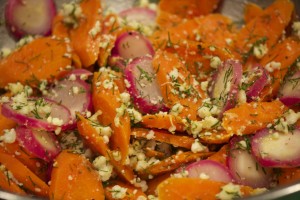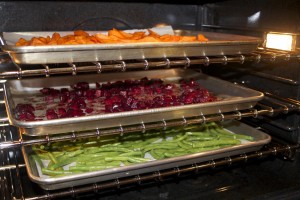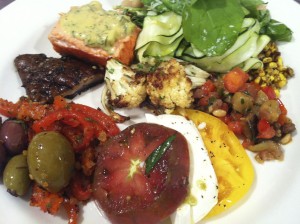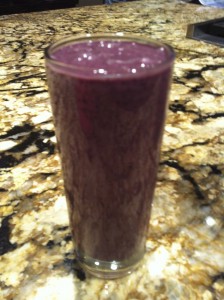
|
Eating for Radiant Skin: Part 2 Free radicals – we hear that word thrown around a lot – are electromagnetic unbalanced molecules that are internally generated in our bodies. They are created through the process of burning oxygen. Your own metabolism naturally does this, so you make your own free radicals just by living, breathing, and metabolizing. A free radical’s mission is to find an electron it can steal and make its own. Free radicals are produced as a byproduct of normal metabolism, so your body has ways of dealing with them. Inflammation in the body also causes free radicals. Exposure to toxicity produces free radicals. That includes too many environmental pollutants and radiation, including too much sun exposure. Sometimes you hear the term oxidative stress, because oxygen is initially involved in the process of free radical creation. Unfortunately, a victim of free radical damage is collagen, which keeps skin looking plump and elastic. The good news is that skin cells are always dying off and are being replaced by new cells. You do have the opportunity to improve your skin by enhancing your overall health, so that when you replace your old cells, your new cells will be healthy cells. (In a nutshell, that’s why when you start to eat better, your skin looks better as well.) Include foods that contain antioxidant nutrients. A diet rich in antioxidants helps you to have healthy, glowing skin. Antioxidants travel around the body and donate one of their electrons to each free radical that is seeking one. When they do this, the free radicals stop tissue damage. The best known antioxidants are Vitamins A and Betacarotene, Vitamin C, and Vitamin E. Also, there are phytochemicals in plant foods. These are various plant chemicals that contain antioxidants, even though they’re not vitamins and minerals. Phytochemicals are protective against cancer and other degenerative diseases, and are related to pigments in fruits and vegetables. So that is why you often hear that’s it’s good to eat a rainbow of vegetables:
Orange: carrots, apricots, pumpkins, red: tomatoes and cherries, green: avocados, leafy greens, brown; nuts and seeds, blue: blueberries and blackberries. A lot of these not only contain phytochemicals but Vitamin A, C, and E as well. One example of a phytochemical is a flavonoid, which is found in the pulp of foods containing Vitamin C, which is WHY it is better to have food in the whole food source than in a juice. Foods with Vitamin A and Betacarotene:
By the way, food with too much beta-carotene can turn your skin orange, which is what happened to me in my youth. This is not a harmful condition, but it does indicate that one is not converting all of the beta-carotene to Vitamin A. Foods with Vitamin E:
Foods with Vitamin C:
Share on Facebook and Twitter | Health Tips | No comments
Leave a Reply
|




